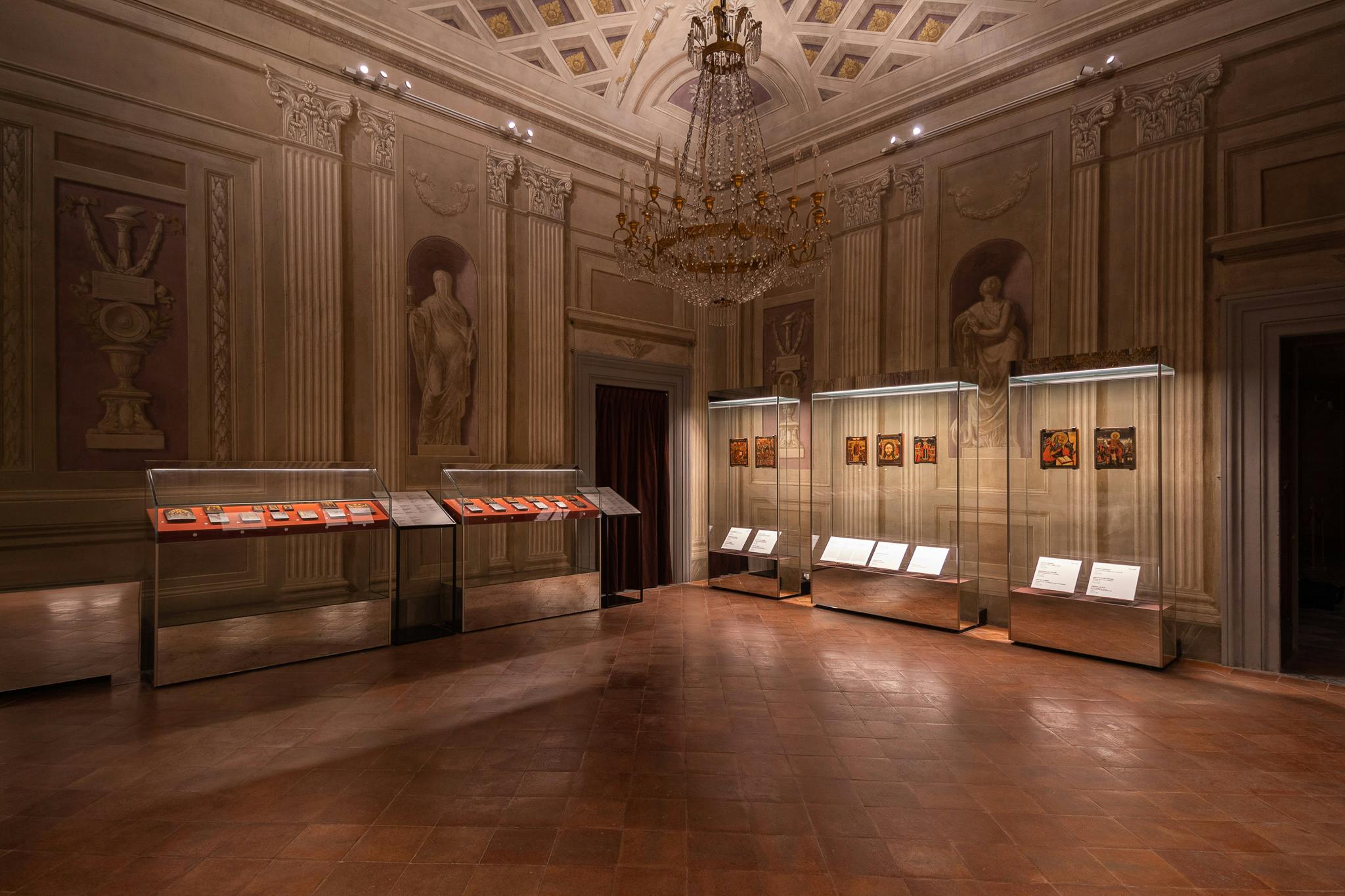History | Museum of Russian Icons | Pitti Palace
The collection of Russian icons in the Uffizi Gallery is the most ancient selection of this genre outside ancient Ruthenia (which loosely corresponds to Ukraine, Belarus and Western Russia today). It mostly consists of paintings on panel created in the provincial workshops of central Russia in the early decades of the 18th century, inspired by the models produced in Moscow in the studios of the Kremlin Armoury. The Tikhvin Icon of the Mother of God, dated 1728 and painted by Vasilij Grjaznov, is the only signed work in the entire collection. With the exception of a few specimens that had belonged to the Medici that date back to the 16th-17th centuries, the icons entered the collection of the Grand Dukes of Tuscany under the Habsburg-Lorraine dynasty before 1761.
The collection is exhibited on the ground floor of Palazzo Pitti in the rooms that were part of the summer apartment decorated for the future Grand Duke of Tuscany, Cosimo III, and his bride Marguerite Louise d’Orleans, when they married in 1661. The centrepiece of the apartment was the large central hall, which Grand Duke of Tuscany Pietro Leopoldo of Habsburg-Lorraine decided to turn into the Palatine Chapel in 1766.
